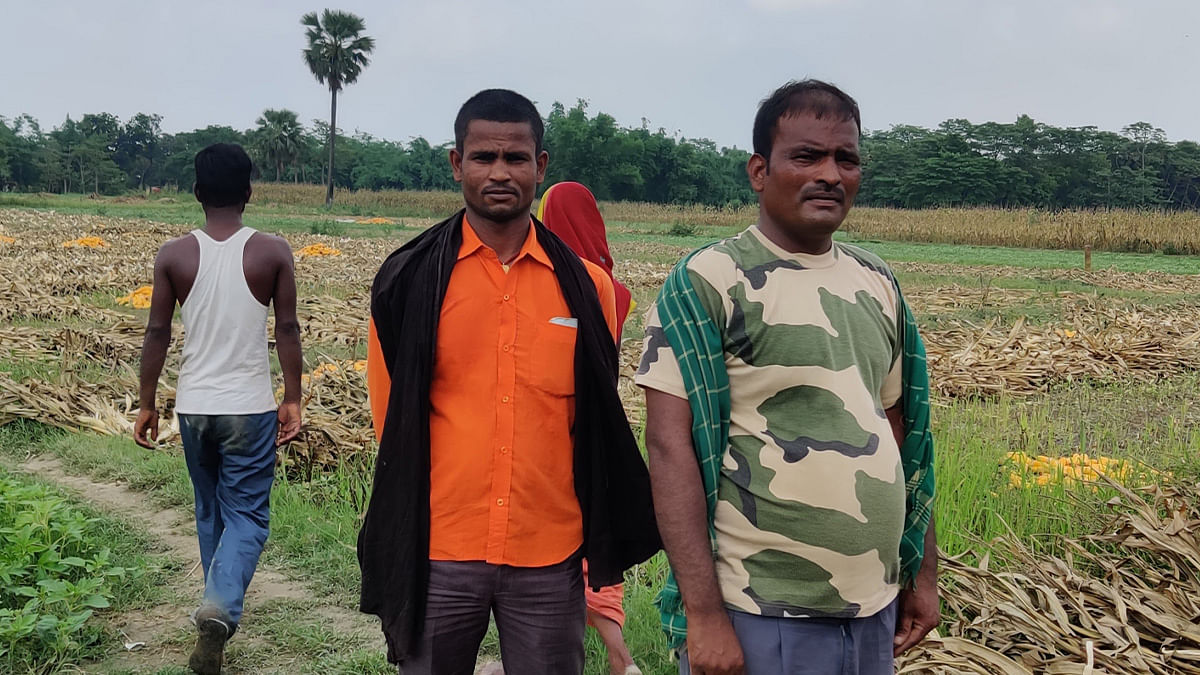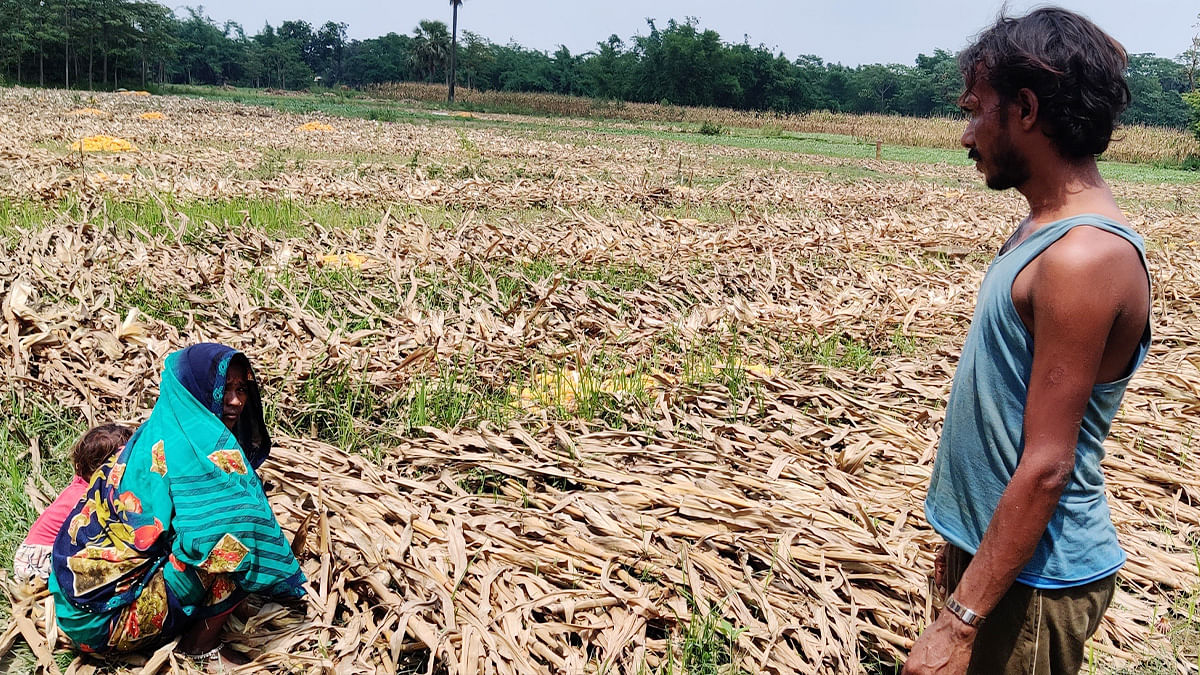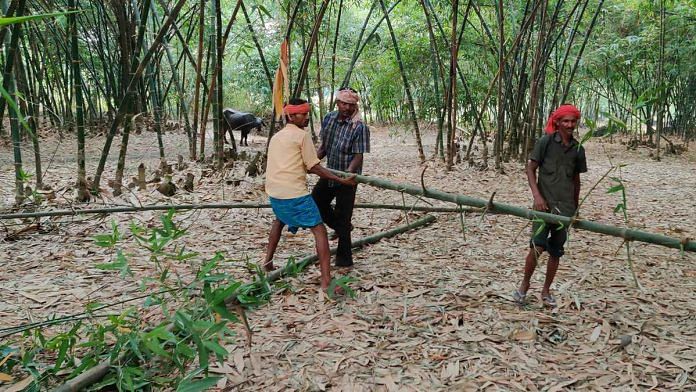Muzaffarpur: The din of buses and trucks is long gone. Now, there is just silence in the villages of Muzaffarpur’s Minapur block.
The months of May and June here are usually marked by buses that arrive — two a day on average in end May and early June — to ferry migrant labourers to different places across India for work.
Contractors, middlemen and even employers from Punjab, Haryana, Delhi, Assam and Maharashtra would arrange these buses to bring labourers without any hassle — just about anyone looking to work elsewhere could climb on.
This year, with the country battered by the second wave of Covid-19 and different states/UTs under their individual lockdowns, the buses and trucks are nowhere to be seen. The potential passengers — residents of local villagers — are holed up at home, trying to come to terms with this unprecedented spell of uncertainty.
A primarily rural district, Muzaffarpur — like other parts of Bihar — sends thousands of labourers to metro cities like Delhi, Chennai, and Mumbai for different kinds of work, or to Punjab/Haryana for farm gigs. Many come back March end, in time for harvesting of local crops like maize, wheat, and lychee. The work outside has helped residents weather the upheavals they experience almost every year in the flood-prone district, but the pandemic has stripped them of this hope.
This lull in opportunities is the last thing Umesh Rai, 55, a resident of Belahi Lachi village, needed. He lost his poultry farm, cattle shed and the roof of his house in a storm that hit the village — 32 kilometres from Muzaffarpur (district headquarters) — on the morning of 16 May. He had spent all his savings of Rs 34,000, and also taken a loan of Rs 70,000, to set up the poultry farm.
Business at his farm, says Rai, first took a hit on account of rumours about Covid transmission through chicken. The storm was the final nail in the coffin.
“Now, I want to earn and pay back my loan but we have heard that there is no work in Punjab. There are no buses to take us there,” he said.
Local residents say work is hard to come by in villages. Even if they get work, the earnings are frugal.
There is the Mahatma Gandhi National Rural Employment Guarantee Act (MNREGA), made for the express purpose of providing jobs in villages, but it is surrounded by allegations of delayed payments and corruption — allegations the district administration denies.
Also Read: What happens when Covid test camp is held in remote Bihar village? Nothing. No one turns up
In search of livelihood
Muzaffarpur lies on the banks of the Burhi Gandak River, and is also served by the rivers Bagmati and Lakhandayee. It is named after Muzaffar Khan, a revenue officer under the British rule. It is the source of some of the best lychees that hit the fruit markets every year.

Bihar’s rural population heavily depends on agriculture and its allied fields. However, this dependence has dropped over the past few years. According to NSSO Periodic Labour Force Survey, this dependence dropped to 49.20 per cent of the population in 2018-19, from 75 per cent in 2002-05.
This is seen as a consequence of local residents escaping villages to cities in search of sustainable livelihood opportunities.
Muzaffarpur, for one, suffers flooding almost every year, which hits the district’s life and economy. Then there are the annual summer outbreaks of Acute Encephalitis Syndrome (AES), locally called chamki bukhar, in north Bihar.
As a result, in the months of May-June, Muzaffarpur witnesses a large-scale migration of labourers.
In Gangta, 8 kilometres from Belahi Lachi, Mukhiya Pati (Mukhiya’s Husband) Arun Kumar Gangta said 80 per cent of the village’s men move out to different states.
“Due to the pandemic, you are able to see men here. Had it been otherwise, you can’t find many, as the majority leave for better opportunities in different cities,” he added.
Amid the lack of opportunities at home, people are taking whatever work they find.
Also Read: Covid killed parents, 3 Bihar siblings now fight virus stigma — ‘no one even offered food’
‘Life here is extremely difficult’
Babloo Pandit, also a resident of Belahi Lachi, worked in Ghaziabad but had to return after he was left out of work by the lockdown in Uttar Pradesh. In the village, work is hard to come by, he said, adding that income is 60 per cent less.
“Life here is extremely difficult. I used to earn Rs 400-500 daily back in Ghaziabad but here it’s just up to Rs 200, that, too, if I am lucky to get work,” he said.
Dinesh Sehni said he had come back to Gangta on 20 March last year, for Holi, but stayed back after the nationwide lockdown was imposed.
“Only God knows how we have managed to live in these 14 months. We would earn the equivalent of 5 kilos of ration in Punjab but here it’s just 2 kilos,” he says while peeling off maize wraps in the farm where he works.
Dinesh and his wife Pinky Devi work side by side so they earn more to provide for their family of 7.

“My wife had never seen our own farms. But this time, I am forced to make her work in the scorching sun. This is the only way to sustain ourselves. We don’t want to sleep empty stomach,” he said.
Dinesh said he tried to go back to Punjab but could not afford the costs involved.
The central government’s MNREGA scheme — for which Rs 73,000 crore was set aside in the 2021-22 Budget — doesn’t appear to draw much traction among villagers.
Said Mukhiya Pati Arun Kumar, “There is delay in remittance and corruption at block level to sanction work, so people don’t prefer to avail of the scheme.”
Senior officials in the administration, however, deny the allegations.
“We have 52,151 labourers working on 9,052 sites in Muzaffarpur altogether,” said Deputy Development Commissioner Sunil Kumar Jha.
(Edited by Sunanda Ranjan)
Also Read: BJP ‘anti-Muslim’, vaccines will ‘sterilise’ us — why these Bihar Muslim villages shun Covid jab



